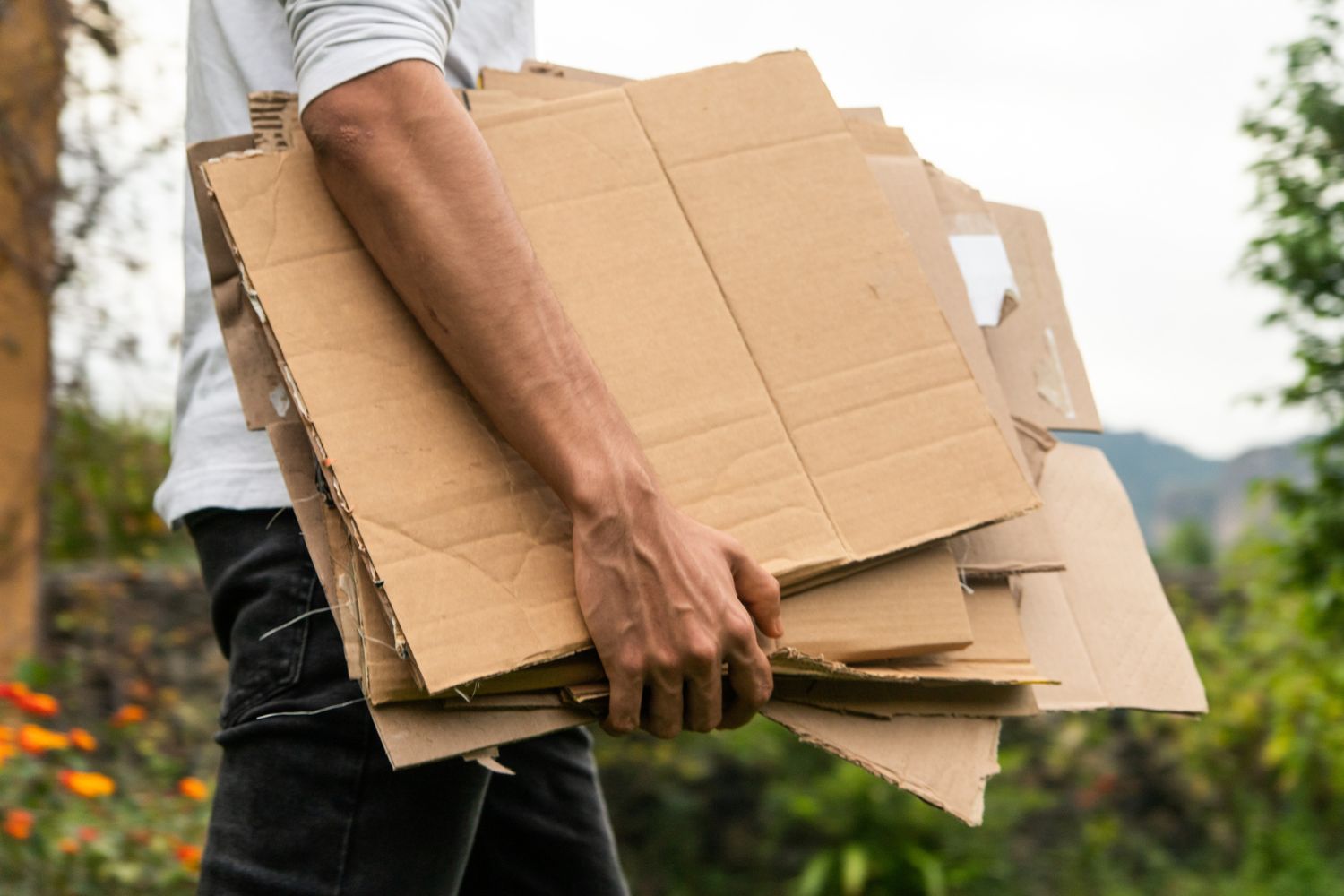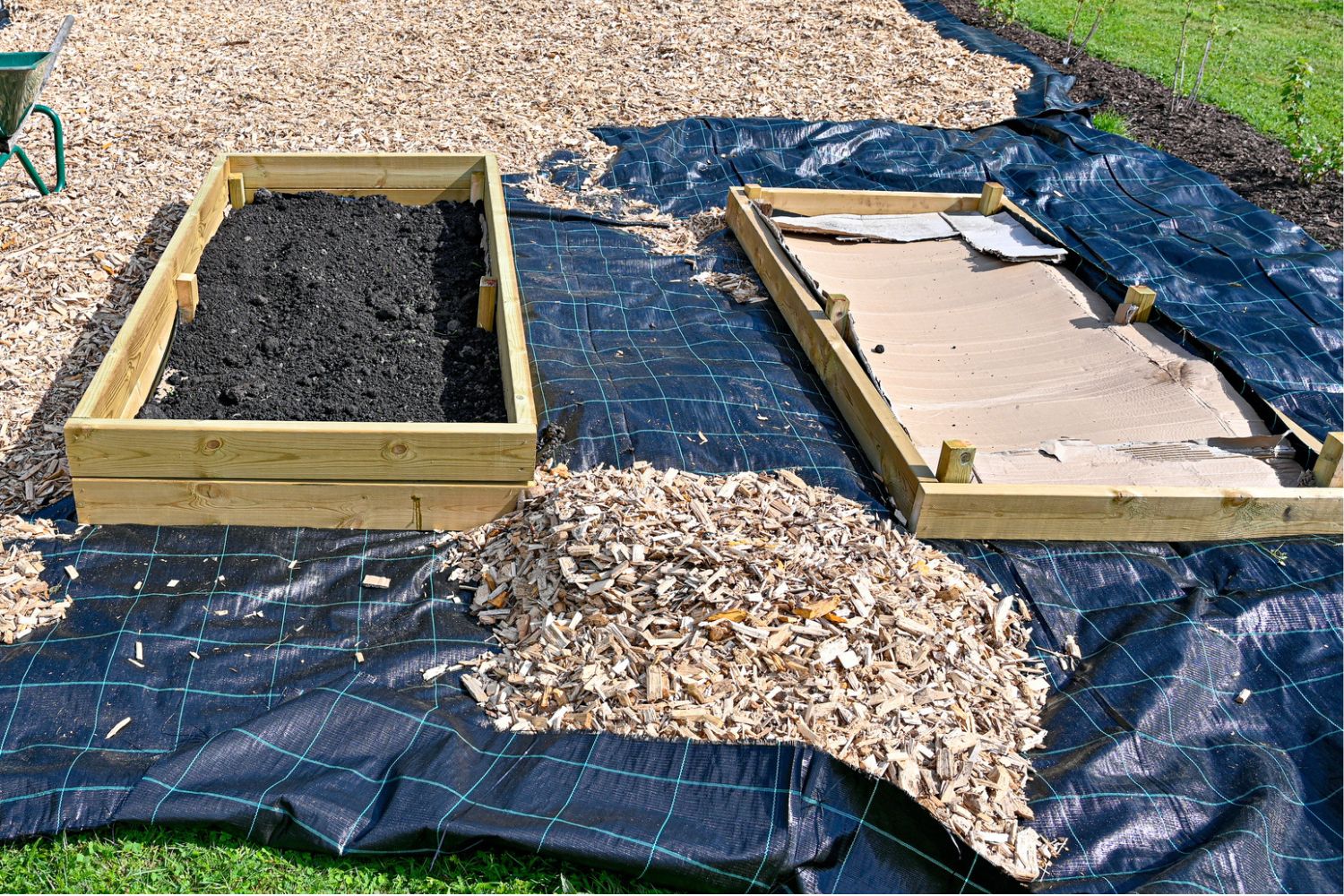If weeds are ruining your garden and dousing them in weed killer just isn’t cutting it, a cardboard weed barrier is another option you could consider. Like other weed barriers, it can reduce weed growth and allow your plants to thrive . With the right approach, making one out of cardboard can also be a quick and affordable option. Here’s what you need to know.
Using cardboard for a weed barrier

Whether you’ve just received a package in the mail or bought flat-pack furniture, cardboard boxes are annoying to recycle and dispose of. However, if you add your backyard weeds to the mix, there may be a simple solution on both ends!
Using cardboard as a weed barrier can be effective in your garden – with the cardboard smothering weeds and promoting decomposition into the soil, which adds to composting and fertilising efforts.
The best way to use cardboard weed barriers effectively is by placing them under pavers or in garden beds . While it may not look the best in the beginning, having a cardboard layer under pavers or mulch in your garden bed will ensure weeds will be smothered and cannot grow .
What kind of cardboard should I use for a weed barrier?
The cardboard that you should use should be clean, unwaxed and not excessively damaged. It should not be heavily printed or have any tape or glue on it. This is so it can easily break down and decompose into the soil.
What should I consider before making a cardboard weed barrier?
As well as considering the type of cardboard you plan to use, it’s a good idea to think about your existing soil and potential pests. In particular, consider if your area is prone to termites , which eat cellulose materials including paper and cardboard. Considering termites cause more than $1.5 billion of damage to Australian homes each year, you definitely don’t want to lay down any weed barriers that could draw them towards your home. If you’re in doubt, you could consult a pest specialist before laying any cardboard down.
How to lay a cardboard weed barrier

If you’ve decided that cardboard weed barriers are right for your garden, the next step is to put them in place. You can take a different approach to laying a cardboard weed barrier depending on whether you want to place it around pavers or new garden beds.
Pavers
Wherever you wish to have a garden path made of stones or pavers, and you don’t want weeds to grow through the cracks, lay some cardboard down! Simply place cardboard down before pavers or stones and moisten with water.
The cardboard will act as a barrier against weeds and eventually decompose into the soil underneath your garden path.
New flowerbeds or planting zones
To create new garden beds or prepare an area for planting new flora, you can use the method known as sheet mulching by placing cardboard layers underneath.
Firstly, clear out all sizable stones from the designated spot to ensure an even surface. Lay down cardboard over your planting zone and dampen it thoroughly. Utilize these displaced rocks to anchor the corners of the cardboard so they remain stationary.
This should be done in autumn Or during early winter so that by the time spring arrives, all weeds or undesired plants will be suffocated, leaving your space prepared for planting.
The post What does the cardboard weed block technique involve? appeared first on Better Homes and Gardens .